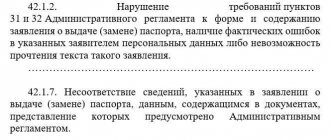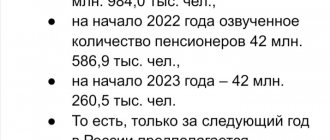Neglect of safety requirements for working conditions is fraught with danger for both employers and employees. What are the safety requirements for working conditions? How to ensure safe working conditions?
As safety experts joke, safety is a religion that you don’t have to believe in, but the rituals must be followed. However, serious liability is provided for violation of labor protection requirements.
The term "danger"
The list of basic concepts in Art. 209 of the Labor Code of the Russian Federation, the term “danger” has been added. This is a potential source of damage to the life or health of an employee. This could be production or office equipment, technological operations, raw materials used and materials that the employee uses during work.
Workplace in the new interpretation of Art. 209 of the Labor Code of the Russian Federation is not just a location for performing labor functions, it must meet the requirements established by the state. They will be installed by the Russian Ministry of Labor.
A new article has been introduced - 209.1, which formulates the basic principles of ensuring safe working conditions: prevention, prevention of hazards and minimization of damage to the health of workers. The emphasis must now be on preventing workplace hazards and minimizing damage to workers' health, rather than preventing them in the first place.
This is a preventative model for ensuring the safety of workers at work and implementing control and supervisory activities in the field of labor protection. That is, priority implementation and development of a system for preventing industrial injuries and occupational diseases in order to preserve the life and health of workers.
Prohibition of work in hazardous conditions
Article 214.1 of the Labor Code of the Russian Federation establishes a direct ban on work in hazardous conditions.
If, based on the results of a special assessment, the employees’ work is considered dangerous (class 4), then the employer must suspend its performance. Then the grounds for classification as a dangerous class must be eliminated according to the developed action plan. When drawing it up, you need to take into account the opinion of the primary trade union cell (if there is one at the enterprise); a copy of the plan should be sent to the State Labor Inspectorate.
Work can be resumed only after receiving the results of a second special assessment, which confirms a reduction in the level of danger. Before reducing working conditions from a dangerous class, the employer has two options: provide employees with another job or maintain their positions and average salary during downtime (Article 216.1 of the Labor Code of the Russian Federation).
However, this prohibition does not apply, for example, to work to eliminate the consequences of emergency situations, as well as to certain types of work, the list of which is approved by the Government of the Russian Federation.
What negative factors are assessed
To determine which assessment classes exist at the enterprise and which of them correspond to normal working conditions, specialists carefully analyze all the nuances. It is necessary to find and record what exactly and how much it affects the human body during one shift.
There are usually three groups:
- physical - noise, vibration, light, ultrasound and the like;
- chemical - personnel receive negative effects from compounds and substances;
- biological - the consequences of the spread of microorganisms, bites, spores and fungi.
But this also includes psychophysical ones, when a person is overexerted from overly concentrated or monotonous work.
To make it easier to determine into which classes working conditions are divided, inspectors usually draw up a table where they enter all the likely impacts on a person. Then they determine how much each of the features affects people.
The more serious the harm, the greater the funding for compensation. Every detected nuance is necessarily documented and steps are taken to correct it.
If the experts decide that it is safe to work, then no compensatory actions will be taken.
Important - remote specialists and homeworkers are not studied, as are those hired by individuals without special status.
For failure to use personal protective equipment - unpaid downtime
From March 1, 2022, it is prohibited to allow those who do not actually use the issued mandatory personal protective equipment (PPE) to work. This is a new paragraph of Art. 76 Labor Code of the Russian Federation. This applies to work in harmful and (or) dangerous working conditions, in special temperature conditions. Moreover, in the event of dismissal on this basis, the employer is not obliged to maintain the employee’s average salary. Currently, suspension from work for failure to use PPE is provided only for those who work underground (Article 330.4 of the Labor Code of the Russian Federation).
In accordance with the latest edition of Art. 185 of the Labor Code of the Russian Federation, the employee’s place of work (position) and average earnings at the place of work are retained only for the duration of mandatory medical examinations. From March 1, 2022, the norm will also apply to the period of mandatory psychiatric examination. In cases of suspension from work of an employee who has not undergone training and testing of knowledge and skills in the field of labor protection or a mandatory medical examination through no fault of his own, he is paid for the entire period of suspension from work as idle time. That is, you must pay at least 2/3 of the average salary (Part 1 of Article 157 of the Labor Code of the Russian Federation).
The approach to providing PPE is fundamentally changing. Now each position (profession) has its own personal protective equipment. The amendments stipulate that the provision of PPE will be carried out taking into account the harmful production factors present in the workplace. Industry standards for the issuance of PPE and flushing agents, drawn up taking into account the positions held by employees and the work they perform, are being replaced by uniform standard standards (Article 221 of the Labor Code of the Russian Federation).
The new standard standards for the free issuance of PPE are relevant for all industries and depend directly on the presence of harmful and dangerous factors in the workplace. Employers will have to rely on the results of the labor safety assessment and occupational risk assessment, and also take into account the opinion of the trade union. At the same time, the previous industry standards will operate in parallel with the new ones for some time, but only within the framework of the transition period - until December 31, 2024.
Note! Employers will have a new obligation - to train employees in the rules for using PPE (Article 214 of the Labor Code of the Russian Federation). Training personnel in the rules for using PPE is one of the five basic procedures included in the occupational safety training course in accordance with the new edition of the Labor Code of the Russian Federation. An employee who has not completed training will not be allowed to work, and for refusing to use mandatory PPE, he can be suspended from performing job duties without pay. Personnel should be provided with protective equipment free of charge and in full in accordance with the standards. If the employer does not have such an opportunity, he will have to arrange downtime with payment in the amount of the average salary (Article 216.1 of the Labor Code of the Russian Federation).
What classes of working conditions are there and why are they declining?
The audit is performed more than once for the entire period of the organization’s activities. It is regularly carried out again, identifying new circumstances, if any. In addition, each position is required to have a job description and survey to determine the level of hazard.
If all company employees use personal protective equipment and fully comply with all regulations, the harmfulness may officially become lower. But also only after a fresh examination of the SOUT.
New responsibilities and rights
The basic procedures for the employer's management of labor protection are structured, clarifying the rights and obligations of the participants in the relationship. One of the goals is to reduce the excess costs of employers in the field of labor protection.
Employers will be able to manage labor protection documents electronically. When checking the State Labor Inspectorate, you will have to provide the inspector with access to databases of electronic documents on labor protection (Article 214.2 of the Labor Code of the Russian Federation). The amendments make absolutely legal video surveillance, audio monitoring and other types of remote monitoring of work for industrial safety purposes, as well as the subsequent storage of the resulting records. However, employees must be informed about the installation of video cameras, microphones and other recording equipment at their workplaces. Let us note that remote recording of work processes and electronic document flow for labor protection are now provided for by separate rules for a number of activities.
The employee’s right to know in what conditions he works, what professional risks he faces, whether he is entitled to protective equipment and any compensation, as well as whether video cameras and other remote control devices are installed at his workplace is enshrined in Art. 216.2 Labor Code of the Russian Federation.
In addition to the existing list of employer responsibilities in the field of labor protection, the following are introduced:
- regular improvement of working conditions, constant readiness to localize (minimize) and eliminate possible consequences of occupational risks;
- systematic identification of hazards and occupational risks, their regular analysis and assessment;
- development of measures aimed at ensuring safe conditions and labor protection, assessing the level of labor risks before commissioning production facilities and newly organized workplaces;
- when hiring a disabled person or if the employee is recognized as disabled, the creation of conditions for him, including production and sanitary conditions, in accordance with the individual rehabilitation program;
- coordination of measures to prevent cases of damage to the health of workers during work on foreign territory;
- In addition to skills in handling PPE, workers need to organize: briefings on labor protection; first aid training for victims; training in safe methods and techniques for performing work; on-the-job training for certain categories of personnel (Article 219 of the Labor Code of the Russian Federation). The current rules of OT training and requirements for training programs are fixed in the new order. An important innovation is systemic monitoring within the framework of the special labor safety system and assessment of professional risks, which should be carried out by the employer in the event of identification of a harmful production factor or any danger threatening the life or health of the enterprise’s employees.
The law also establishes a lot of new responsibilities for workers: comply with labor protection requirements, use PPE correctly; undergo training in safe methods and techniques for performing work and providing first aid to victims at work, instruction on labor protection, on-the-job training, testing of knowledge of labor protection requirements; immediately notify your immediate or superior manager about any situation that threatens the life and health of people, about every accident at work or about a deterioration in your health, including the manifestation of signs of an acute occupational disease (poisoning); undergo mandatory preliminary (upon entry to work) and periodic (during employment) medical examinations, other mandatory medical examinations, as well as extraordinary medical examinations at the direction of the employer in cases provided for by law, personally participate in ensuring safe working conditions at their workplace within the limits performing their labor function, monitoring the serviceability of the equipment and tools used, and so on (Article 214 of the Labor Code of the Russian Federation).
The employee’s right to receive information about labor conditions and safety at his workplace, about the wage rate and its level, protective measures, guarantees, and so on is being expanded. If the special assessment reveals dangerous conditions, the employer must immediately inform the employee about this.
The Russian Ministry of Labor has prepared a draft of a new indicative list for preventing cases of damage to the health of workers. It comes into force on March 1, 2022 and will remain in effect until March 1, 2028. The appendix to this document contains recommendations from the Ministry of Labor on its application. The approximate list of measures to prevent cases of damage to the health of workers includes 4 blocks of measures:
- organizational;
- technical;
- on provision of PPE;
- therapeutic and preventive and sanitary.
The new list will have to replace the current list of measures, which was approved by Order of the Ministry of Labor dated March 1, 2012 No. 181n.
Measures according to workplace hazard classes
The main actions that should be performed are enshrined in law. They are designed to protect personnel and give them property and financial benefits commensurate with the losses of people.
For example, it is important that an enterprise assigns a shortened working week to everyone with a hazard class higher than 3.2. Mandatory additional leave is prescribed for everyone with a level of at least 3.1. Salaries increase for everyone with degrees 3 and 4.
Additionally, they can give out milk and other therapeutic and prophylactic products, and send them to sanatoriums so that they can improve their health. What exactly to use for a specific position depends on the profession.
For those who work in heavy industries, it is possible to retire immediately after working a certain number of years.
Each company will have to pay increased pension contributions and contributions to social funds for its employees. For example, if the harmfulness is 3.4, an additional tariff of 7% is transferred.
The employer is obliged to indicate the class and, if necessary, subclass of working conditions in the Republic of Moldova in the contract. In addition, he must tell what the specialist’s activities will consist of and how harmful it will be. By signing this document, a person confirms that he agrees to all the circumstances in their entirety.
If any of the events that happened changes, it is necessary to change the composition of the employment contracts of all persons who work in close proximity to the facilities. But this is allowed to be done only after collecting the next SOUT commission. If the inspectors noted that everything remains the same, then no changes need to be made.
Accounting for microdamages
Employers have had to document and investigate work-related injuries and occupational diseases that affect the health and performance of the injured employee before. But now a new article 226 “Microdamages (microtraumas)” will appear in the Labor Code of the Russian Federation. Microtraumas are abrasions, bruises, soft tissue bruises, superficial wounds and other injuries received by workers and not resulting in health problems or temporary disability. It is required to keep records of microdamages (microtraumas) of workers in a special journal. Taking into account microtraumas will allow the employer to identify potential risks of injury, reduce occupational risks to zero and ensure improved working conditions. Employers will approve by local regulations the procedure for recording micro-injuries of employees.
The microtrauma accounting scheme is as follows. An employee who has suffered a micro-injury will need to contact his supervisor so that he can record the incident and consider why the employee suffered. The basis for registering microdamage (microtrauma) of an employee and considering the circumstances and reasons that led to its occurrence is the injured employee’s appeal to his immediate or superior manager, employer, or employer’s representative.
When the victim contacts the organization’s medical worker, the latter reports the employee’s microdamage (microtrauma) to the notified person. The supervisor must ensure that the victim receives the necessary first aid or medical attention. Then the notified person immediately informs the labor protection specialist or the person appointed responsible for organizing labor protection work in any publicly available way about the microdamage (microtrauma) of the employee.
Within 24 hours, an occupational safety specialist must review the circumstances and causes that led to the occurrence of microtrauma. The employee is asked for an explanation and the scene of the incident is inspected. The injured employee has the right to personal participation or participation through his representatives in the consideration of the circumstances and causes that led to the occurrence of microdamage (microtrauma). Then a certificate is drawn up and an entry is made in the journal. Then measures are taken to eliminate the causes that led to the occurrence of microdamages (microtraumas).
When preparing a list of relevant activities, it is recommended to take into account:
- the circumstances of microtrauma, including the equipment, tools, materials and raw materials used, work methods, working conditions, and the possibility of their reproduction in similar situations or in other workplaces;
- organizational deficiencies in the functioning of the occupational safety management system;
- the physical condition of the employee at the time of microtrauma;
- effective control measures;
- mechanisms for assessing the effectiveness of control measures and implementation of preventive measures.
The Ministry of Labor has already developed a draft order with recommendations for recording microtraumas of workers and published it on the regulation.gov.ru portal. The appendices to the order contain recommended samples: certificates regarding the consideration of the causes and circumstances that led to the occurrence of microdamage (microtrauma) to the employee; log of microdamages (microtraumas) of workers.
* * *
If, based on the results of a special assessment, harmful working conditions are identified at workplaces, and previously they were acceptable or normal, employees occupying such places must be provided with guarantees and compensation provided for by labor legislation for workers in hazardous conditions - reduced working hours, additional paid leave and increased wages (depending on the hazard class) - from the date of approval of the special assessment report.
It is also necessary to adjust the terms of the employment contract by changing the working conditions and defining guarantees and compensation for a specific employee. To do this, an additional agreement is drawn up. If the employee does not agree to work in harmful conditions, he is offered a transfer, and if he refuses or there are no vacancies, the employee is fired under clause 7 of Part 1 of Art. 77 Labor Code of the Russian Federation.
HR department of a commercial organization, No. 5, 2021
Risk-based approach
Many supervisory agencies are moving to risk-based control and supervision, the meaning of which is fully revealed when the unnecessary burden on “law-abiding” businesses is reduced and, conversely, a more detailed analysis of the activities of organizations begins, which save effort and money on complying with legal requirements. Modernization and automation of occupational safety management systems are firmly established in the daily life of many organizations, and a huge number of software products and services make it possible to implement various methods for assessing occupational risks and reduce the burden on ordinary specialists.
The main objective of the changes will be the transition to a risk-oriented direction in the field of labor protection. This direction implies the most individual approach, maximum personalization of the policy in the field of labor protection. The employer will be required to take into account the risks in each specific workplace and create a safe environment for workers taking these features into account.
Every employer must ensure the safety of workers, guided by two principles: prevention and prevention of hazards; minimizing damage that threatens the health of personnel (Article 209.1 of the Labor Code of the Russian Federation). This means that, in addition to preventive measures aimed at eliminating harmful production factors, a set of measures should be developed aimed at localizing and eliminating the possible consequences of their impact.
An assessment of occupational risks must be carried out not only for existing production processes, but also before the commissioning of production facilities and newly organized workplaces (Article 214 of the Labor Code of the Russian Federation). Recommendations for the selection of methods for assessing the levels of professional risks and for their reduction will be approved by the Ministry of Labor of the Russian Federation (Article 218 of the Labor Code of the Russian Federation).
Employers are also required to systematically carry out measures to identify hazards. This will require the detection, recognition and description of hazards, including their sources, conditions of occurrence and potential consequences in managing occupational risks. Existing hazards will be detected, recognized and described within the framework of four types of procedures: monitoring the state of conditions and labor protection in the workplace; investigation of industrial accidents; investigation of occupational diseases; investigation of industrial microdamages (microtraumas). Risk assessment methods should be selected taking into account current recommendations of the Ministry of Labor.
He has already developed a draft “Recommendations for choosing a method for assessing the level of occupational risk and reducing the level of such risk” in order to “provide methodological and practical assistance to managers and specialists in labor protection organizations, representatives of trade unions and other persons interested in creating a system for managing occupational risks as a mandatory element of the employer’s occupational safety management system, in compliance with mandatory requirements.” The recommendations contain criteria that an employer can use when choosing methods for assessing the level of professional risks, the process and stages of this choice, as well as examples of assessment tools.
Classification of guarantees and compensation for workers under harmful and dangerous working conditions
Based on the results of inspections, damage is determined and specific measures are prescribed.
What can you offer your staff:
- Working hours are shorter than usual. If production does not meet normal standards, you can make a 36 or 30 hour week.
- Additional paid leave. Minimum 7 days above standard. In some cases, it is possible to replace it with monetary compensation.
- Increased pay. If the parameters are not normal, you need to add from 4% to 24% to the flashing part. At least 4%, anything higher is at the discretion of the employer. Additional payment is made exclusively for time worked.
- Early assignment of pension. There is a list of positions where it is recommended to work fewer years in order to retire.
To automate production activities, we recommend installing special software from Cleverence, which will make it much easier not only to control the work process, but also to optimize routine tasks.
Self-examination is a new employer right
One of the key and effective ways to prevent consequences from offenses is the introduction of an internal control system or a self-inspection regime (used when monitoring the financial activities of an employer).
New edition of Art. 22 of the Labor Code of the Russian Federation gives the employer the right to “conduct an independent assessment of compliance with the requirements of labor legislation and other regulatory legal acts containing labor law norms (self-examination).” This is a new form of self-test. The employer will be able to independently assess how well the company complies with labor legislation, focusing on the checklists approved by Rostrud.
If, based on the results of the self-examination, the company receives a high rating, it can accept and send to Rostrud a declaration of compliance with mandatory requirements. The declaration is valid for one to three years from the date of registration. But if, during an unscheduled inspection, a GIT inspector finds out that the employer is violating labor safety requirements, the document will be canceled.
WHAT TO DEAL WITH EMPLOYEES?
So, if, based on the results of a special assessment, harmful production factors were identified at some workplaces and a hazard class was established, it is necessary for workers to be provided with the guarantees provided for by the Labor Code of the Russian Federation (see diagram).
| Guarantees provided to employees depending on the hazard class | Class harmfulness 3.1 | Salary increase of at least 4% |
| Class harmfulness 3.2 | Increase in salary by at least 4%, provision of at least 7 days of additional leave | |
| Classes harmfulness 3.3 and 3.4 | Increase in salary by no less than 4%, provision of at least 7 days of additional leave, establishment of reduced working hours (no more than 36 hours per week) |
QUESTION:
Professions and jobs in which harmful working conditions were identified during a special assessment are not included in the “harmful” lists. What to look for when determining the amount of guarantees?
Currently still in effect:
1. Lists of industries, works, professions, positions and indicators that give the right to preferential pension provision (approved by Resolution of the Cabinet of Ministers of the USSR dated January 26, 1991 No. 10).
2. Lists of industries, workshops, professions and positions with hazardous working conditions, work in which gives the right to additional leave and a shortened working day (approved by the Resolution of the State Committee for Labor of the USSR, the Presidium of the All-Union Central Council of Trade Unions dated October 25, 1974 No. 298/P-22).
These lists are applied to the extent that they do not contradict the Labor Code. According to the latter, the employer is obliged to provide guarantees and compensation if working conditions are considered harmful or dangerous. Moreover, the code does not oblige one to be guided by these lists. If professions, positions or types of work where working conditions are recognized as harmful are not indicated in these lists, such workers are still entitled to guarantees and compensation. When establishing them, one must be guided by Art. 92, 117 and 147 of the Labor Code of the Russian Federation.
Labor protection service at the enterprise
Employers will become more independent in addressing labor safety issues.
The structure and number of workers in the labor protection service is determined by the employer, taking into account the recommendations of Rostrud (Article 223 of the Labor Code F). The required number of occupational safety specialists is calculated in accordance with Resolution of the Ministry of Labor of Russia dated January 22, 2001 No. 10 “On approval of inter-industry standards for the number of occupational safety and health workers in organizations.” If there is no occupational safety service or occupational safety specialist in the organization, their functions are performed by the employer himself or an authorized employee. The employer also has the right to invite a third-party organization that provides services in the field of labor protection and has the appropriate accreditation.
The changes provide for the activities of labor protection committees (Article 224 of the Labor Code of the Russian Federation). They are created by decision of the employer or staff. Their work is aimed at interaction between the manager and employees to comply with labor protection requirements, prevent injuries and occupational diseases, as well as carry out inspections and inform the staff about the results.
From September 1, 2021, the qualification requirements for the level of education and work experience will change for all occupational safety specialists. The new professional standard was introduced by Order of the Ministry of Labor of Russia dated April 22, 2021 No. 274n.
The Ministry of Labor has already developed recommendations on the organization of the work of the labor protection service, the structure and number of the service, which are proposed to be used from March 1, 2022 instead of the current recommendations and staffing standards (Resolution of the Ministry of Labor of Russia dated February 8, 2000 No. 14). Advice is given on the main areas of activity of this service: conducting a special assessment, identifying hazards, managing professional risks, etc. For each area, the standards for the number of employees will be fixed. The document is undergoing public discussion.
Responsibility for violation of labor protection legislation
Responsibility for the formation of the labor protection system and its functioning lies with the employer, i.e. head of an organization or individual entrepreneur.
SOT (occupational safety engineer) employees are responsible only within the framework of performing their job duties, which are established by job descriptions and regulations on the labor safety service. Let us recall that for failure or improper performance by an employee of his assigned job duties, the employer may apply disciplinary sanctions to him: reprimand, reprimand, dismissal (Article 192 of the Labor Code of the Russian Federation).
Based on Art. 5.27 of the Code of the Russian Federation on Administrative Offenses for violation of labor and labor protection legislation, the guilty official (the head of the organization) may be subject to a fine of 2 thousand to 40 thousand rubles, or suspension of its work for up to 90 days (by court decision) .
Persons conducting business activities without forming a legal entity may be fined from 50 thousand to 200 thousand rubles for similar violations. They are also subject to such punishment as administrative suspension of activities for up to 90 days.
In addition, on the basis of this article of the Code of Administrative Offenses of the Russian Federation, for violation of labor and labor protection legislation, an official who has previously been subjected to administrative punishment for a similar administrative offense is subject to disqualification for a period of one to three years. The employment contract with the head of the organization, disqualified by a court decision, is terminated on the basis of Art. 32.11 Code of Administrative Offenses of the Russian Federation. Information about the manager is entered into a special register of disqualified persons.
Criminal liability is also provided for violation of labor safety rules. So, according to Art. 143 of the Criminal Code of the Russian Federation, a violation of labor protection rules, committed by a person who is entrusted with the obligation to comply with these rules, resulting in negligence in causing serious harm to human health, is punishable:
- a fine of up to 200,000 rubles. or in the amount of the convicted person’s salary for a period of up to 18 months;
- correctional labor for up to two years;
- imprisonment for up to a year.
Mandatory medical examinations
To maximize the interests of participants in labor relations, it is stipulated that from March 1, 2022, decisions of local governments on introducing additional conditions and indications for mandatory medical examinations for individual employers must be taken taking into account the opinion (Article 220 of the Labor Code of the Russian Federation) of the relevant tripartite regulatory commissions social and labor relations, territorial body of Rospotrebnadzor.
In addition, guarantees of maintaining a job (position) and average earnings were extended to cases of undergoing a mandatory psychiatric examination (new edition of Article 185 of the Labor Code of the Russian Federation).
Special assessment of working conditions
The Russian Ministry of Labor also plans to amend Federal Law No. 426-FZ dated December 28, 2013 “On the special assessment of working conditions” (as amended on December 30, 2020).
Goals – process automation and digitalization:
- certification of experts for the right to perform work according to SOUT;
- provision by expert organizations of up-to-date information on the expert composition, on the reduction of the scope of accreditation of the testing laboratory (center), which is a structural unit of such an organization;
- registration of the results of the SOUT;
- consideration of disagreements based on the results of the examination of the quality of the assessment system;
- obtaining information about entering information about experts and organizations conducting special assessments into the relevant registers.
These innovations will come into force together with the updated Labor Code of the Russian Federation on March 1, 2022.
After this, the Russian Ministry of Labor will have five months to accept new documents to replace those currently in force.
Also, the reasons for the changes will be the centralized collection and recording of information on the assessment of professional risks at the federal level by the Russian Ministry of Labor. Currently, in the Federal State Information System for recording the results of special assessment work (FGIS SOUT) there is no possibility to take into account information about the results of assessment of professional risks, despite the corresponding norm of legislation on SOUT. To implement this provision, it will be necessary to develop and approve a procedure for collecting the results of assessing professional risks, as well as to refine the functionality of the FSIS SOUT. For this reason, the bill provides that the rule will come into force on March 1, 2023.
The Ministry of Labor has approved a new form and rules for submitting a declaration of compliance of working conditions with state regulatory labor protection requirements. The corresponding order No. 406n dated June 17, 2021 was published on the official Internet portal of legal information.
The text of the draft order of the Ministry of Labor of Russia “On approval of standard forms of documents necessary for conducting state examination of working conditions” is posted on the federal portal of draft regulatory legal acts. If adopted, the draft provisions will come into force on March 1, 2022.
How to determine the class and subclass of working conditions in the workplace
Each employer must follow several steps to document or change parameters. It is recommended to invite a specialized company that has a laboratory and specialists of the appropriate level. Only licensed firms have the right to conduct assessments.
What you need to organize this:
- Convene a commission of your own employees. It usually includes managers, doctors and personnel officers, representatives from the trade union, if there are any.
- Prepare a schedule for how this will happen. If there is no standard agreement yet, you can draw it up in any form.
- Identify similar jobs. This is worth doing to reduce the volume of upcoming events and their duration, and therefore the cost will also decrease.
- An agreement is concluded with a specialized organization for the implementation of SOUT.
- Receive reports and familiarize staff with its results. Tell everyone about what will change and how it will affect their body.
- Carry out actions, correct shortcomings, eliminate dangerous moments. It is necessary to check that all positions comply with the rules.
It is worth noting that any company that will conduct an inspection must meet several requirements:
- carry out activities according to SOUT and undergo accreditation;
- have at least 5 hiring specialists;
- maintain the laboratory in working order;
- prepare and issue reports on the results of such inspections.
New regulation on employer checks
From July 1, 2021, labor inspections are regulated by the provisions of Federal Law dated July 31, 2020 No. 248-FZ. In connection with this, Decree of the Government of the Russian Federation dated July 21, 2021 No. 1230 approved a new regulation on federal state control over compliance with labor legislation and other regulatory legal acts containing labor law norms, replacing the previous provision. The new regulation applies to GIT inspections started on July 23, 2021, and is valid until June 1, 2023. Resolution of the Government of the Russian Federation dated September 1, 2012 No. 875 was declared invalid.
The regulation preserves the risk-based approach in the implementation of state control, the criteria for classifying an employer’s activities as a risk category and the frequency of planned control activities.
At the same time, previously the State Inspectorate carried out state control only in the form of scheduled and unscheduled inspections in the form of documentary and (or) on-site inspections. From July 23, the following measures are provided for in the implementation of state control: preventive, control (supervisory). Preventive measures include information, summarizing law enforcement practice, issuing a warning, counseling, and a preventive visit. Control (supervisory) activities include documentary and on-site inspections, inspection visits, and on-site inspections. Of all types of control activities, only on-site inspections are included in the inspection plan. Inspection visit, raid inspection and documentary check are carried out only on an unscheduled basis.









